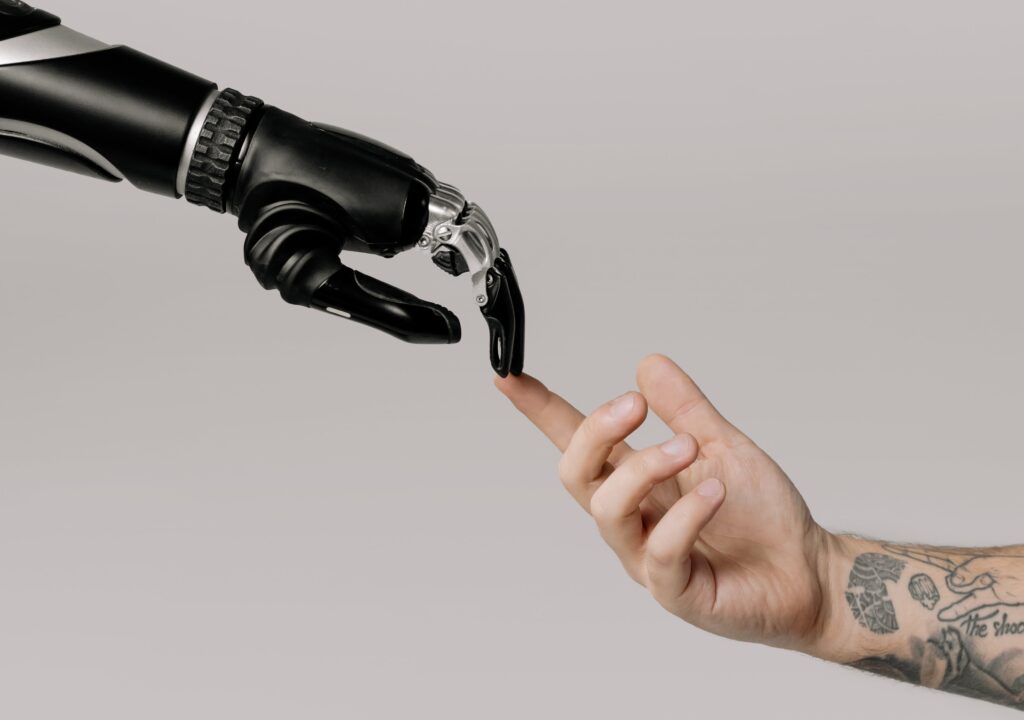
Nurses are a critical part of the modern health care, as they play an important role in health promotion, illness prevention, and caring for the sick, the disabled, and the dying, and are often the unsung heroes in the health care system. Health professionals are short in supply all around the world and use of artificial intelligence (AI) has been proposed as a solution to the problem.
Authors: Laxman Chhetri, Om Krishna Shrestra and Marjut Louhelainen
Compassionate caring has been one of the guiding principles for nurses since the time of Florence Nightingale. It is evident that compassionate caring consisting of behavior considered humanlike such as wisdom, humanity, love, and empathy serves to improve the results of patient care and client satisfaction and improves job satisfaction for nurses (Su et al. 2020). Furthermore, communicating, appreciating each other beliefs, attentive listening, and maintaining kindness, confidentiality, fairness, and sensitivity are also the additional key components of developing quality nurse-patient relationships. A sound nurse-patient relationship enhances the treatment outcome, patient satisfaction, and compliance with treatment, ensuring patient safety, aiding in empowering patients by integrating in decision-making, as well as fostering a caring environment with mutual respect and empathy (Allande-Cusso et al. 2022).
Recently, nursing has been facing several challenges worldwide. Challenges include a lack of experienced staff, poor judgement in decision making, rising early retirement owing to health issues of the working nurses, training, and enrolment barriers, such as a lack of practical training positions or existing language requirements. All these are included in experiences of increased workload, ethical distress and stress level among nurses and are affecting the existing nursing staff’s mental health as well as the nursing care quality, patient safety, and mortality rate. (Tamata & Mohammadnezhad 2022.)
The rise of AI in nursing
A definition given by Elaine Rich as mentioned in Ertel (2017) states that “Artificial intelligence is the study of how to make computers do things at which, at the moment, people are better.”
Artificial Intelligence (AI) is revolutionizing the nursing practice and healthcare delivery with a breathtaking paste. According to Statista (2023), the market valuation for AI in healthcare was estimated to be approximately 11 billion dollars in 2021 and is expected to be 188 billion dollars by 2030 growing at a compound annual growth rate of 37% between 2022 and 2030.
AI can enhance patient outcomes and boost the productivity of the nurses in multiple ways. For example, using AI can aid in image processing, patient monitoring, symptom recognising and documenting the electronic health records helping nurses to make better clinical decisions about patient care. In addition to data management and decision making, AI robots have been introduced to nursing care. Robots can help nurses in physical tasks like gathering supplies, supporting in lifting heavy patients, feeding, bathing, and changing bandages even better than human nurses. Socially assistive robots, or health care assistant chatbots have been developed to benefit socially and emotionally to those patients with mental health issues or act as companion to elderly citizens. All these can assist nurses in lessening their workload and enhancing the quality of life for their patients. (Ellahham et al. 2019; Stokes & Palmer 2020; Chang et al. 2021; Robert 2019.)
Challenges of implementing AI into nursing practice
However, the rapid rise of AI in nursing has also risen some concerns. One of these includes the risk of giving AI an access to patient data delicate patient information. Other risks include information loss, leakage, and manipulation, which can jeopardize individual security and confidentiality in nursing.
Another issue is the possibility of low prediction accuracy, which might result in erroneous or inaccurate predictions hindering quality of clinical decision making. Malpractice concerns are also raised, as developments in telemedicine technology may necessitate appropriate licensing, training, and certifications. Furthermore, hackers’ use of medicolegal algorithms for building autonomous procedures may threaten the integrity and safety of crucial information. (Ellahham et al. 2019.)
There may also be concerns regarding the influence of AI on the healthcare workforce, such as job displacement or changes in the function of healthcare workers. One of the problems is nurses’ lack of trust in AI systems, which might lead to opposition to AI in nursing adoption. Furthermore, multidisciplinary collaboration between nursing and engineering is required to design and apply artificial intelligence systems in nursing, which can be difficult due to variations in language, cultural background, values, principles, and morals between the two areas. The other challenging issues that must be addressed to ensure the safe and successful use of AI in nursing are associated with ethical considerations such as privacy, security, and accountability. (Soriano et al. 2022.)
Ultimately, the biggest obstacle for use in AI in nursing might still be fear that artificial intelligence could outsmart and eventually dominate humans, resulting in job losses for nurse. The nurses who hold this viewpoint may resist the implementation of AI in health care because it will render jobs obsolete. The absence of attention or involvement from nurses in the design, development, and implementation of AI into healthcare practice is one of the problems in using AI in nursing which results in inefficiencies and suboptimal patient outcomes due to a mismatch between the needs of nurses and the capabilities of AI. (Stokes & Palmer 2020.)
Nurses are also worried that robots would malfunction and disrupt their harmonious interactions with patients, implying that further research is required to comprehend how to smoothly incorporate robots into nursing workplaces, i.e., a type of effective interaction between humans and robots. Likewise, the implementation of artificial intelligence technologies necessitates nurses’ perspectives and experience for biomedical engineers to build robots to cope with complex health concerns. (Chang et al. 2021.)
Ultimately, as the quote by Koen Van Leemput stresses FCAI (2023), “A better bicycle does not replace the cyclist, and AI won’t replace doctors”, this sums up the idea that nurses are irreplaceable by AI-based technologies but rather function as a helping hand for providing quality nursing care in the future.
References
Allande-Cusso, R., Fernandez-Gracia, E. & Porcel-Galvez, A.M. 2022. Defining and characterising the nurse–patient relationship: A concept analysis. Nursing Ethics. 29(2), 462–484. Cited 16.5.2023. Available at doi:10.1177/09697330211046651
Chang, H. Y., Huang, T. L., Wong, M. K., Ho, L. H., Wu, C. N. & Teng, C. I. 2021. How Robots Help Nurses Focus on Professional Task Engagement and Reduce Nurses’ Turnover Intention. Journal of Nursing Scholarship. 53(2), 237–245. Cited 20.11.2023. Available at https://doi.org/10.1111/jnu.12629.
Ellahham, S., Ellahham, N. & Simsekler, M. C. E. 2019. Application of Artificial Intelligence in the Health Care Safety Context: Opportunities and Challenges. American Journal of Medical Quality. 2020;35(4), 341-348.Cited 24.3.2023. Available at https://doi.org/10.1177/1062860619878515
Ertel, W. 2017. Introduction to artificial intelligence. Second Edition. London: Springer London. Cited 20.4.2023. Available at https://doi.org/10.1007/978-0-85729-299-5
FCAI. 2023. AI is transforming healthcare: 5 things to know. Cited 16.2.2023. Available at https://fcai.fi/news/2023/4/11/ai-is-transforming-healthcare-5-things-to-know
Robert, N. 2019. How artificial intelligence is changing nursing. Nursing Management. 50(9). 30-39. Cited 20.3.2023. Available at doi:10.1097/01.NUMA.0000578988.56622.21
Soriano, G.P., Yasuhara, Y., Ito, H., Matsumoto, K., Osaka, K., Kai, Y., Locsin, R., Schoenhofer, S. & Tanioka, T. 2022. Robots and Robotics in Nursing. Healthcare 18;10(8):1571. Cited 20.3.2023. Available at https://doi.org/10.3390/healthcare10081571
Statista. 2023. Size of explainable artificial intelligence (AI) market worldwide from 2022 to 2030. Cited 21.4.2023. Available at https://www.statista.com/statistics/1256246/worldwide-explainable-ai-market-revenues/#:~:text=Explainable%20AI%20market%20revenues%20worldwide%202022%2D2030&text=According%20to%20NMSC%2C%20the%20global,over%2024%20billion%20U.S.%20dollars
Stokes, F. & Palmer, A. 2020. Artificial Intelligence and Robotics in Nursing: Ethics of Caring as a Guide to Dividing Tasks Between AI and Humans. Nursing Philosophy. 21(4). Cited 22.3.2023. Available at https://doi.org/10.1111/nup.12306
Su, J.J., Masika, G.M., Paguio, J.T. & Redding, S.R. 2020. Defining compassionate nursing care. 27(2), 480–493. Cited 15.5.2023. Available at https://doi.org/10.1177/0969733019851546
Tamata, A. T., & Mohammadnezhad, M. 2022. A systematic review study on the factors affecting shortage of nursing workforce in the hospitals. Nursing Open. 10, 1247–1257. Cited 21.5.2023. Available at https://doi.org/10.1002/nop2.1434
Authors
Laxman Chhetri and Om Krishna Shrestra are graduating nursing students in LAB University of Applied Sciences.
Marjut Louhelainen works as senior lecturer in LAB University of Applied sciences.
Illustration: https://www.pexels.com/fi-fi/kuva/teknologia-kosketus-tekniikka-ai-6153354/ (Pexels Licence)
Published 2.1.2024
Reference to this article
Chhetri, L., Shrestha, O.K. & Louhelainen, M. 2024. AI in nursing. LAB Pro. Cited and the date of citation. Available at https://www.labopen.fi/lab-pro/ai-in-nursing/






